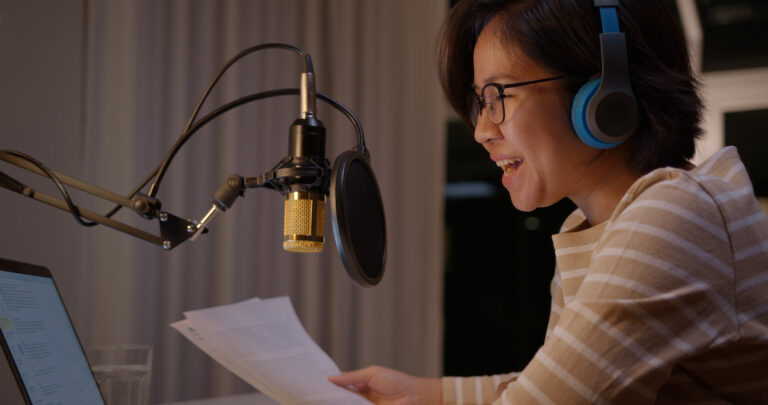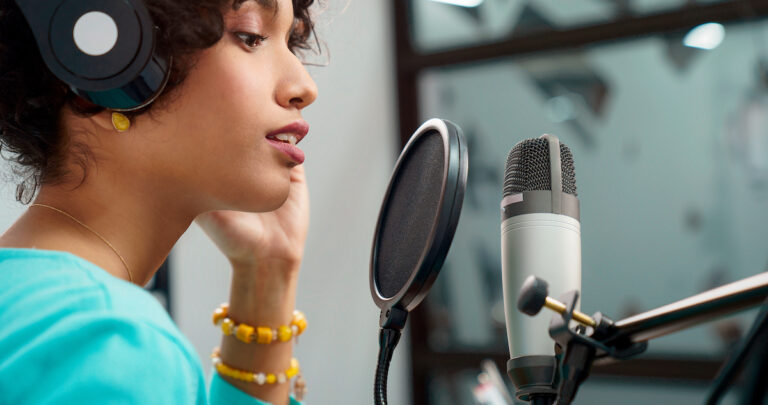The days of announcery voice overs are long gone because, since the advent of reality television, consumers want to be spoken to – not talked at. However, some business owners tend to overdo things in their pursuit of snagging the most natural possible voice over to sell their product or service – and end up with a voice over that can be jaw-clenchingly irritating to potential clients. So you want a great voice over? Avoid these speech patterns!
Some context:

We’ve touched on the power of the voice over in selling your product or service in some depth. Nevertheless, you don’t want:
So like, I was saying like, you really shouldn’t speak like, you know, a valley girl!
Well, at least you shouldn’t have your voice actor speak like that. Unless… they’re actually playing a character who speaks like that in your ad. Even then, proceed with caution. Great scriptwriting is key to making the sale!
While prevalent at street-level, certain vocal speech-patterns are characterized. They’re often very niche, localized, and for most people, an unnatural way of speaking.
Vocal registers
The funny thing is, valleyspeak serves as a really good example of characterized speech patterns, like vocal fry. Our vocal register – from low to high – has been separated into four distinct vibratory patterns:
- Vocal fry
- Modal
- Falsetto, and
- Whistle
The problem with Vocal Fry

It’s become increasingly common in younger speakers now, with the discussion focused particularly on women. Vocal fry is that gratey, guttural sound that’s the result of a minimal amount of air passing through the vocal cords.
The cords’ vibrations slow down because of the lack of airflow, and the cords — which normally vibrate at a fast rate — begin to “pop back and open”. This motion gives the sound a frying or sizzling sound.
The vocal fry tonality remains a very interesting point of contention. Since it’s more notable in young women, the talk around vocal fry has elements of feminism included in it.
Should anyone be telling women how to speak?
Of course not. So while the instinctive answer is no — people are free to speak however they wish, The Guardian claims vocal fry does more harm than good. People perceive the speaker to be less confident and less intelligent.
Ouch.
According to some commentators, vocal fry gives a sense of weak self-advocacy, which according to the article, is more important than merit. Basically, the way you present yourself is more important than how you do things.
While vocal fry doesn’t necessarily determine a level of self-advocacy, in terms of the way vocal fry is perceived, it does give the impression that the speaker is uninspired or lethargic.
The issues of gender politics are larger than this article can discuss, but purely in a voice-over setting, vocal fry is unpleasant to listen to in the longer-term. The modal register – the normal way for speaking – is far more engaging and natural.
Uptalk?

Uptalk or upspeak is another characteristic of valleyspeak. When used, it sounds like you’re asking a question? Or it sounds like the person’s sentence never finishes? And you don’t know whether they finished speaking?
Uptalk is what happens when declarative sentences end with a rising intonation. When the tone of a voice over is supposed to be informative, uptalk can be counterproductive. It sounds unsure and indecisive.
Imagine a voice over for something plain like a nature documentary. “The cheetah cuts across the desert, using its powerful build to advance on the prey.”
Now imagine it with a question mark on the end — “…using its powerful build to advance on the prey?” You can see why uptalk might create problems in a script-read.
Back to The Guardian article, uptalk has an interesting position in workplaces. The conversation around uptalk is centered on young women once again, as a way to placate authorities. But that doesn’t mean uptalk doesn’t happen with other genders too.
Uptalk avoids confrontation and disturbing others. But, like vocal fry, the speech pattern is counterproductive in workplaces too. People find it easier to dismiss a person who doesn’t seem confident in their statements.
Fortunately, without this speech pattern, a person’s success and confidence skyrockets.
Crutches
Umm, this doesn’t necessarily have a place in voice-overs, but like, let’s mention it anyway. If you want a great voice over, always avoid it – even if your chosen voice actor is in character.
Speech crutches such as: “uhh,” “like,” “you know?” These have got to go. Granted, they do have a place in day-to-day speech. People do it all the time. Certainly there’s been a time when you’ve heard a person “ummmm,” until they caught their next thought.
But in the context of a voice over or a presentation, it once again gives a sense of incompetence and a lack of confidence.
We’re once again reminded of Valleyspeak with its extended use of “like,” and “you know?”
Taking a pause or a moment of silence to collect your thoughts is okay. It doesn’t show incompetence as most people might assume, but instead it shows a calculated confidence and patience.
In conclusion
The whole point of this article was to show that you should never use Valleyspeak in your voice overs. If your chosen professional voice actor on Voice123 naturally heads toward recording their first take with a vocal fy tonality, dissuade them from doing so.
Ultimately, a natural, modal speech pattern that avoids the speech mannerisms noted above will allow you to reach and engage your target audience and close more sales.
So what’s not to like, like – you know? 😀


































